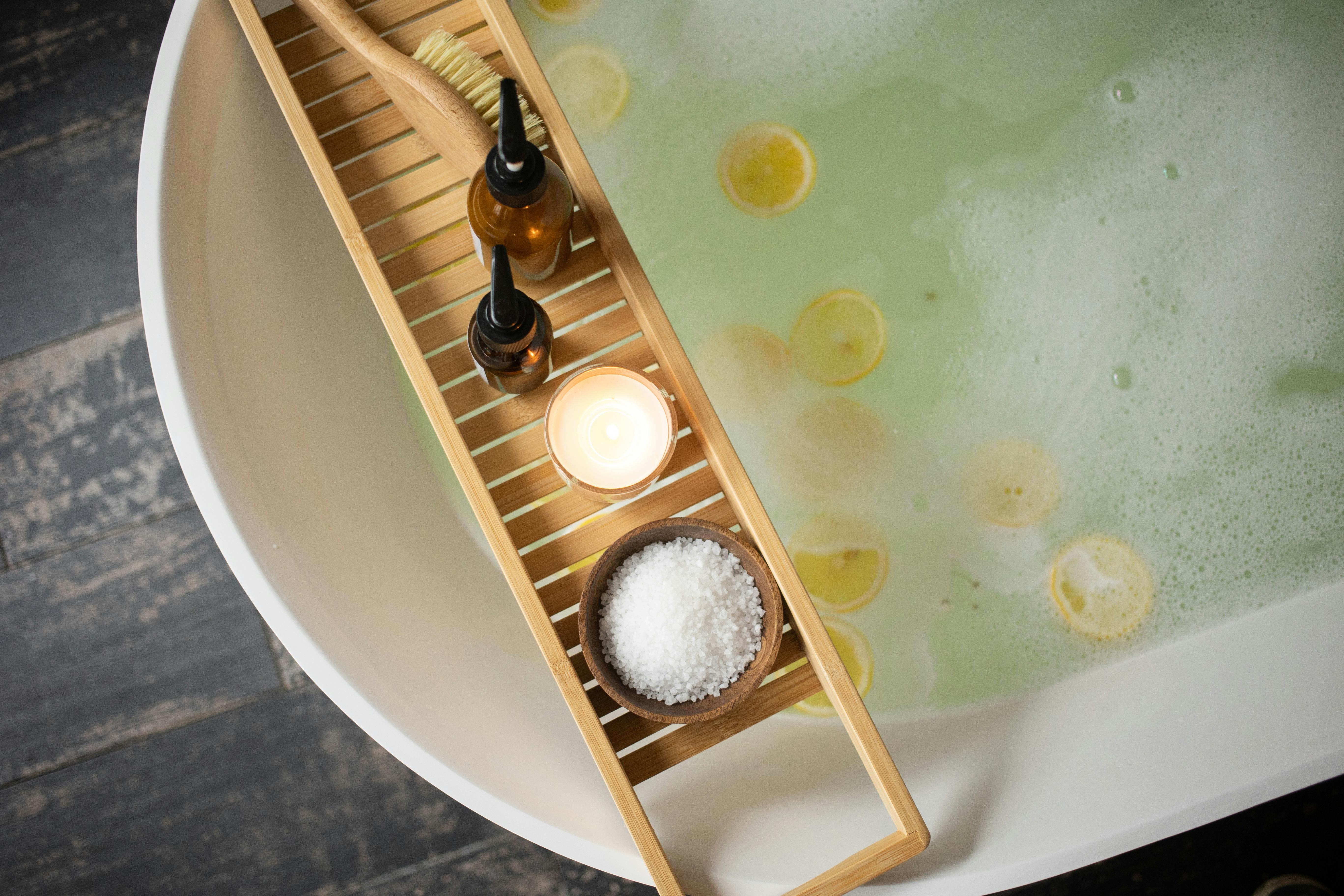Distilling salt water is a process used to remove salt from the water, leaving it safe for human consumption. It is an important technique used to provide clean drinking water in areas where there is limited access to other sources of fresh water. This guide will explain the process of distilling salt water, as well as provide tips on how to make the most of your distilled water.Distillation is a process used to separate components of a liquid mixture based on their different boiling points. In this process, the liquid mixture is heated and the vapors are cooled and condensed back into a liquid form. The separated components can then be collected in separate containers. Distillation is used to purify liquids and to separate mixtures of two or more liquids with different boiling points.
What is Salt Water?
Salt water is a type of water that contains dissolved salts, such as sodium chloride. It is found in oceans, seas, and other saltwater bodies. Saltwater can also be artificially created by adding salt to freshwater. Saltwater has many uses in industry and agriculture, as well as for recreational activities. It is also essential for the survival of many marine organisms.
Saltwater is composed of different components depending on how it was formed and its location. The most abundant component is usually sodium chloride, but other salts such as magnesium sulfate and calcium carbonate may also be present. The salinity of saltwater can vary greatly from one location to another, depending on factors such as temperature, rainfall, and evaporation levels.
Saltwater can be used for a variety of purposes including cooling systems in power plants and industrial processes, desalination of drinking water, and in agriculture to irrigate crops or to reduce soil salinity levels. It can also be used recreationally for swimming pools, surfing or other water sports activities.
The presence of salt in saltwater can have both positive and negative effects on marine ecosystems. Too much salt can be harmful to certain species while others may thrive in high-salinity environments. The balance between the amount of dissolved salts present and the environment they are in must be carefully managed to ensure healthy marine ecosystems are maintained.
What Equipment is Needed to Distill Salt Water?
Distilling salt water requires a few pieces of specialized equipment. The most important is a still, which is used to heat up and evaporate the salt water. Once evaporated, the vapor is then condensed into pure water. A condenser is also needed to cool down the vapor and turn it back into liquid form. Additionally, tubing and a container are required to transport the pure water from the condenser to its final destination. Finally, a heat source such as a stove or hot plate must be used to heat up the salt water in the still. All of these components are necessary for successful distillation of salt water.
Distilling salt water can be done on a small scale with just one or two pieces of equipment, or it can be done on an industrial scale with more complex systems. Regardless of the size of your operation, the same basic principles apply: heating up salty water until it evaporates, cooling down the vapor so that it condenses back into liquid form, and transferring it to an appropriate storage container. With some patience and careful attention to detail, anyone can distill their own saltwater at home.
Preparing the Salt Water for Distillation
The process of preparing salt water for distillation involves a few steps in order to ensure the quality and purity of the distilled water. The first step is to mix together salt and fresh water in a container. It is important to ensure that the salt is evenly distributed throughout the water, as this will help to ensure that the distillation process yields clean, pure water. Once the salt has been mixed into the water, it should be left to sit for a few hours so that any impurities can settle out.
Once the salt has been mixed and allowed to settle, it is time to filter out any impurities from the solution. This can be done either manually or with a filtering machine. If filtering manually, it is important to use a fine filter material such as cotton or paper towels in order to remove any particles from the solution. If using a filtering machine, make sure that you follow all instructions carefully and use only approved filter materials.
After filtering out any impurities, it is time to begin heating up the solution. This should be done slowly and gradually in order to avoid boiling off too much of the salt solution. Once heated up, allow it cool down before transferring it into an appropriate container for distillation.
Finally, prior to distilling your salt water solution make sure that you check its pH level using pH test strips or a pH meter. This will ensure that you are able to achieve optimal results when distilling your solution as different solutions will have different pH levels which will affect how they are distilled.
Once all these steps have been completed you should be ready to begin distilling your salt water solution and enjoy clean, pure distilled water!
Heating Salt Water
Heating salt water is a fairly simple process that can be done in a variety of ways. One of the most common methods is to use a stovetop or hot plate to bring the water to a boil, and then reduce it to a simmer. This method works best when using large quantities of water and can take some time, depending on the volume of water being heated. Another option is to use an electric kettle or hot water dispenser for quicker results. These appliances are designed to heat up the water quickly and evenly, making them great for smaller batches of salt water. Finally, if you need to heat up only a small amount of salt water, you can put it in a microwave-safe container and heat it up in the microwave. Be sure to check the instructions on your microwave before using this method as microwaves vary in wattage and may require different settings depending on what you’re heating.
No matter which method you choose, always keep an eye on the salt content of your heated salt water. If too much salt is added during heating, it could lead to an unpleasant taste and could potentially damage any equipment used for heating purposes. It’s also important to remember that all cooking vessels should be cleaned thoroughly after use as salt deposits can build up over time and create unwanted flavors in future batches.

Boiling the Water
Boiling the water is the first step in distilling water. This process involves heating the water until it reaches its boiling point, which is usually 212 degrees Fahrenheit (100 degrees Celsius). Once the water has reached its boiling point, steam will begin to rise off of the surface. This steam is then collected in a condenser where it cools and turns back into liquid form. The collected liquid is now distilled water, free from contaminants and impurities that were present in the original source of water.
Cooling and Collecting the Distilled Water
The second step in distilling water is cooling and collecting the distilled water. This involves cooling down the condenser to a temperature below that of the boiling point of water. As it cools, the condensed steam will turn back into liquid form, known as distilled water. The cooled liquid can then be collected into containers for use or storage. It is important to ensure that all containers used for collecting distilled water are completely clean and sterile in order to avoid contamination from other sources.
Testing the Quality of the Distilled Water
Testing the quality of distilled water is a necessary step before using it for consumption or industrial purposes. It is important to ensure that the distilled water is free from contaminants and meets all safety standards. To do this, laboratory tests are conducted to measure different parameters such as pH, dissolved solids, chlorine, and other chemical constituents. All these tests help in determining whether or not the distilled water is safe for use.
The most common test for measuring the quality of distilled water is a pH test. This measures how acidic or alkaline the water is on a scale from 0 to 14. Distilled water typically has a neutral pH of 7, which means it has equal amounts of both acid and alkaline substances. If the pH level falls too far outside this range then it could indicate that there are contaminants present in the water and further testing may be required.
Other tests conducted to check for contaminants include measuring levels of dissolved solids, chlorine, iron, and other chemical elements in the water. These tests help determine if there are any health-related issues associated with consuming or using the distilled water. For example, if chlorine levels are too high then this could mean that there may be bacteria present in the water, making it unsafe for consumption.
Finally, it’s important to note that while testing can provide an indication of whether or not distilled water is safe to consume or use in industrial processes, additional steps should be taken to ensure its quality and safety before use. This includes regularly replacing filters and taking careful precautions when handling or storing the distilled water. By doing so, you can ensure that you always have access to clean and safe drinking and industrial-grade distilled water.
Disposing of the Remaining Salt Water Waste
Salt water waste is a by-product of many industrial processes, and it is important to dispose of it responsibly. One way to do this is through reverse osmosis, which involves passing the salt water through a membrane that filters out the salt particles. This process can be used to reduce the salt content in the water, making it safe for re-use or for disposal in an environmentally responsible manner. Additionally, the filtered out salt can be used for other purposes such as de-icing roads or providing fertilizer for crops.
Another method of disposing of salt water waste is through evaporation. This involves allowing the salt water to evaporate into the atmosphere, leaving behind a clean and usable source of water. This can be done naturally or with the help of mechanical equipment such as evaporators. The advantage of this method is that it does not produce any hazardous by-products and also reduces any potential contamination from heavy metals or other pollutants that may be present in the waste.
Finally, salt water can also be disposed of through a process known as deep well injection. This involves pumping the waste into deep underground wells where it becomes permanently sealed off from contact with humans and other sources of pollution. However, this method should only be used when other methods are not feasible due to environmental regulations or safety concerns.

Conclusion
Distilling salt water is a great way to ensure that the water that you have access to is safe and clean. By using the process of distillation, you can remove any impurities and contaminants from the salt water, providing you with a safe and healthy source of drinking water. Although it may take some time and require some specialized equipment, it is worth the effort in order to ensure clean drinking water for your family. Distilling salt water can be a cost-effective way of providing yourself with safe drinking water, as opposed to purchasing bottled water.
This guide has provided a comprehensive overview of how to distill salt water. From understanding the basics of distillation, to learning about the necessary equipment, this guide has provided all the information needed for you to distill salt water safely. With this knowledge in hand, you will be able to provide yourself and your family with clean and healthy drinking water.

